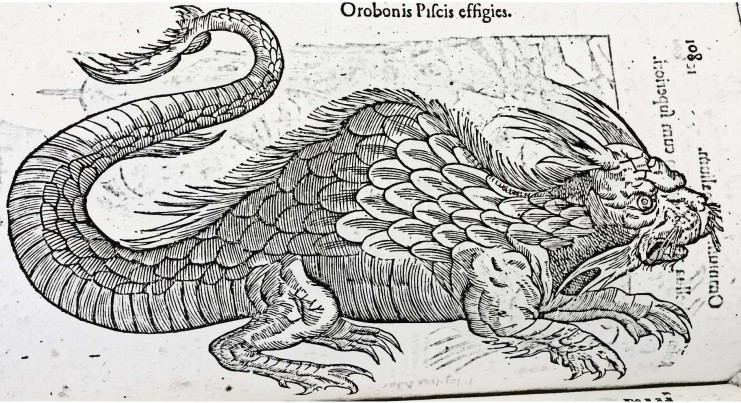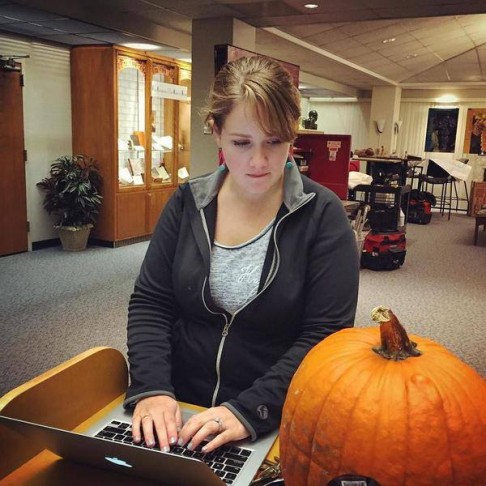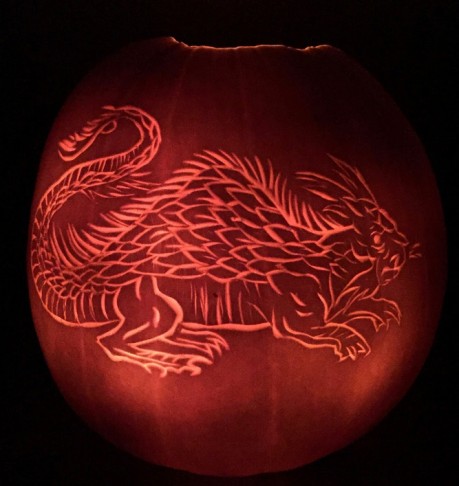Nothing says fall like pumpkin carving, and nothing says Halloween like monsters. These two signs of the season have come together at the Wangeensteen Historical Library as Emily Beck has created a hauntingly beautiful pumpkin carving of a monster that – until now – has only lived in the world of rare books and folklore.
Beck – Ph.D. candidate in the History of Science, Technology, and Medicine – continues Wangensteen’s annual tradition of recreating a historical image on a pumpkin.
“I’m always inspired by the woodcut illustrations in historical texts, so Halloween is a fun opportunity to use them,” she said.
Selecting an image
This year, Beck carved a 17th century depiction of Orobonis Pifcis Effigies. Beck combed through the many monstrous images in Wangensteen’s rare book collection. The final selection was made with the help of her students.
“I picked out three finalists from the collection and then polled the students in my discussion sections,” said Beck. “They all picked this particular image. I think because they thought it would be the trickiest one,” she said.
The picture of Orobonis Pifcis Effigies came from Wangensteen’s original copy of Ulyssis Aldrovandi Patricii Bononiensis Monstrorum Historia: Cum Paralipomenis Historiae Omnium Animalium. This title loosely translates to “The History of Monsters.” It is a book filled with images of creatures along with descriptive text that was published in 1642, 40 years after Aldrovandi’s death.
Historical significance
Aldrovandi, an Italian naturalist, ventured beyond biological truths. He gathered information on history, mythology, and folklore. The nature of his work is evident throughout Monstrorum Historia and in this specific image of Orbonis Pifcis Effigies.
Michael Taylor, in his book Weird Science: A Renaissance Book of Monsters, states that Aldrovandi’s works convey “abstract ideas about religion, morality, and the workings of the universe.”
Beck first learned about Aldrovandi in terms of his love of collecting.
“Aldrovandi had a very well-respected ‘Cabinet of Curiosities’ – a collection of all of the wonders of the natural and human world – and made significant contributions to studies of plants and animals,” she said. “In an era where observational evidence was becoming the gold standard for nature studies, I always enjoy looking at the images of his monsters.
“For me, they represent the mystery that nature still held for Aldrovandi and his colleagues,” she added. “Even though they never saw the Orobonis Pifcis Effigies, it was still part of their studies.”







